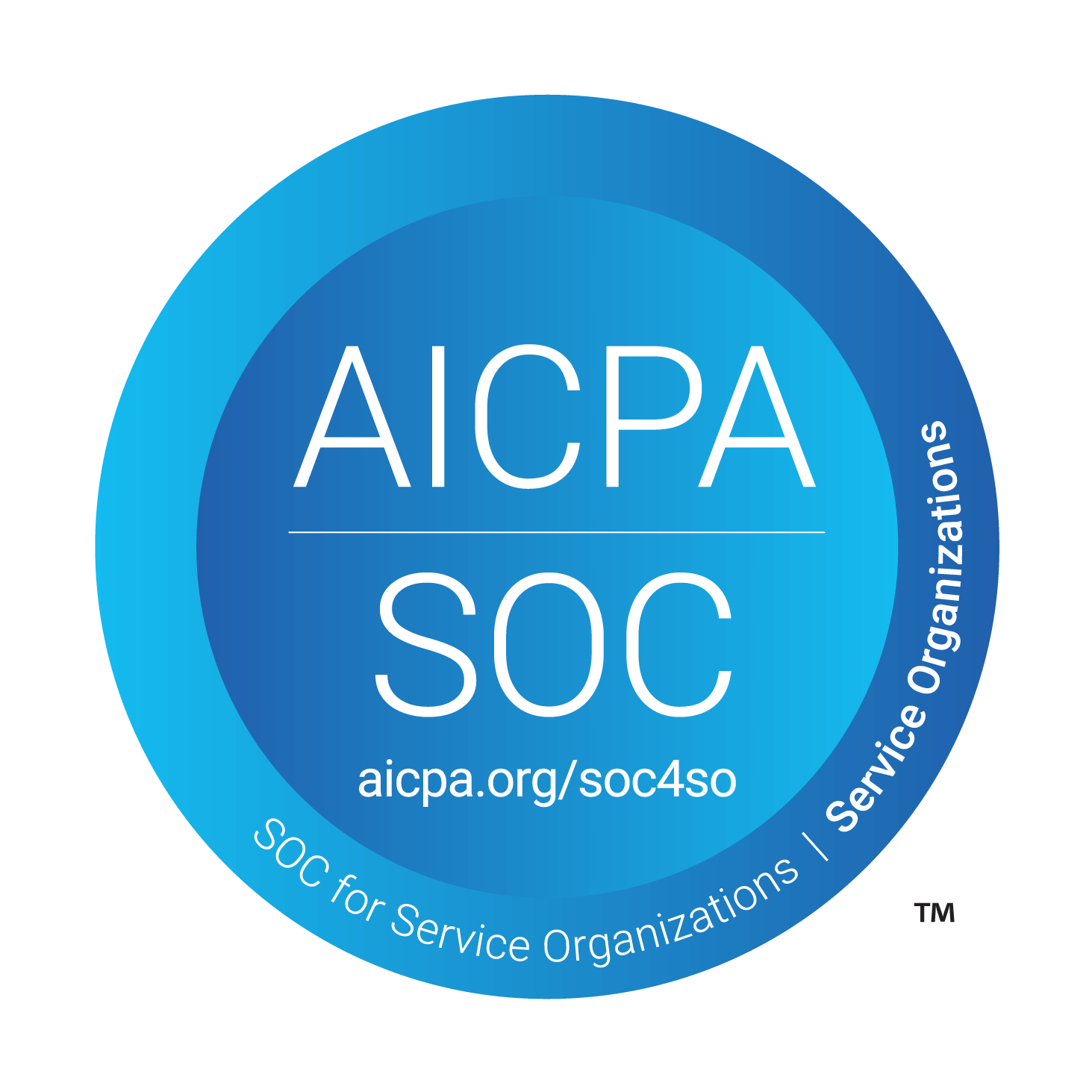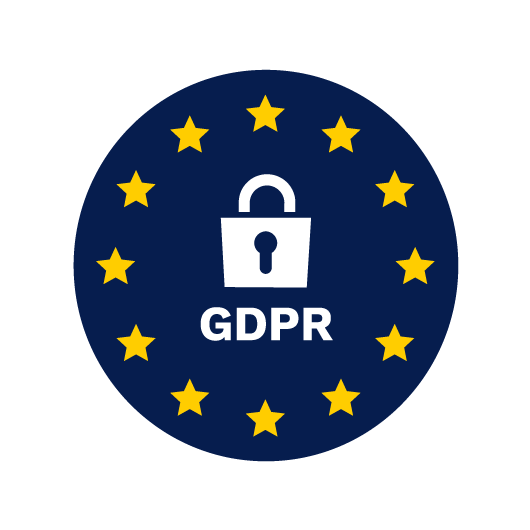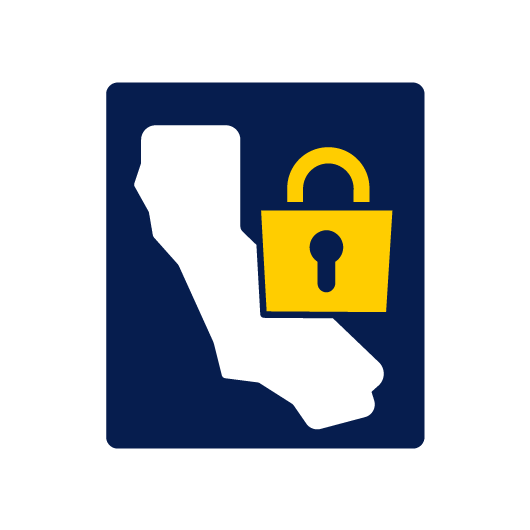How to Make Workplace Compliance Easy Through Training, Culture, and Accountability
Pardon our french, but managing workplace compliance can be a pain in the butt. Internal policies keep piling up while regulations constantly change. As a bonus, employees often see compliance as tedious or just plain boring — so keeping them engaged is nigh impossible.
But compliance doesn’t have to be a struggle. The key to making life easier for everyone involved lies in making compliance training fun, embedding it into your culture, and creating accountability without burdening your team.
In this article, we'll dive into practical ways to streamline compliance efforts. You'll learn how to make policies understandable, integrate compliance into everyday work, leverage technology to automate tasks, and use fun strategies to train and incentivize good behavior.
What is workplace compliance?
Workplace compliance means ensuring your organization follows applicable laws, regulations, and internal policies designed to protect employees, customers, and the business itself.
Broadly speaking, compliance covers three main areas:
- Legal compliance: General laws all businesses must follow, including labor laws (wages, overtime), anti-discrimination laws (equal opportunity, harassment prevention), and safety regulations (like OSHA standards).
- Industry-specific regulations: Specialized rules depending on your sector, such as healthcare (HIPAA), environmental (hazardous waste disposal), finance (SEC regulations, anti-money laundering), and data privacy (GDPR, CCPA).
- Internal policies: Guidelines created by your organization to establish ethical behavior and operational standards, such as a code of conduct, ethical behavior guidelines, and cybersecurity policies.
The consequences of non-compliance depend on which “rules” are broken.
For example, not following some internal operational guidelines might only get you a warning and a slap on the wrist. On the other hand, non-compliance with industry regulations can lead to fines, lawsuits, reputational harm, and lost business.
How to make compliance easy
Below are tried-and-tested methods to simplify compliance and make it a natural part of daily operations.
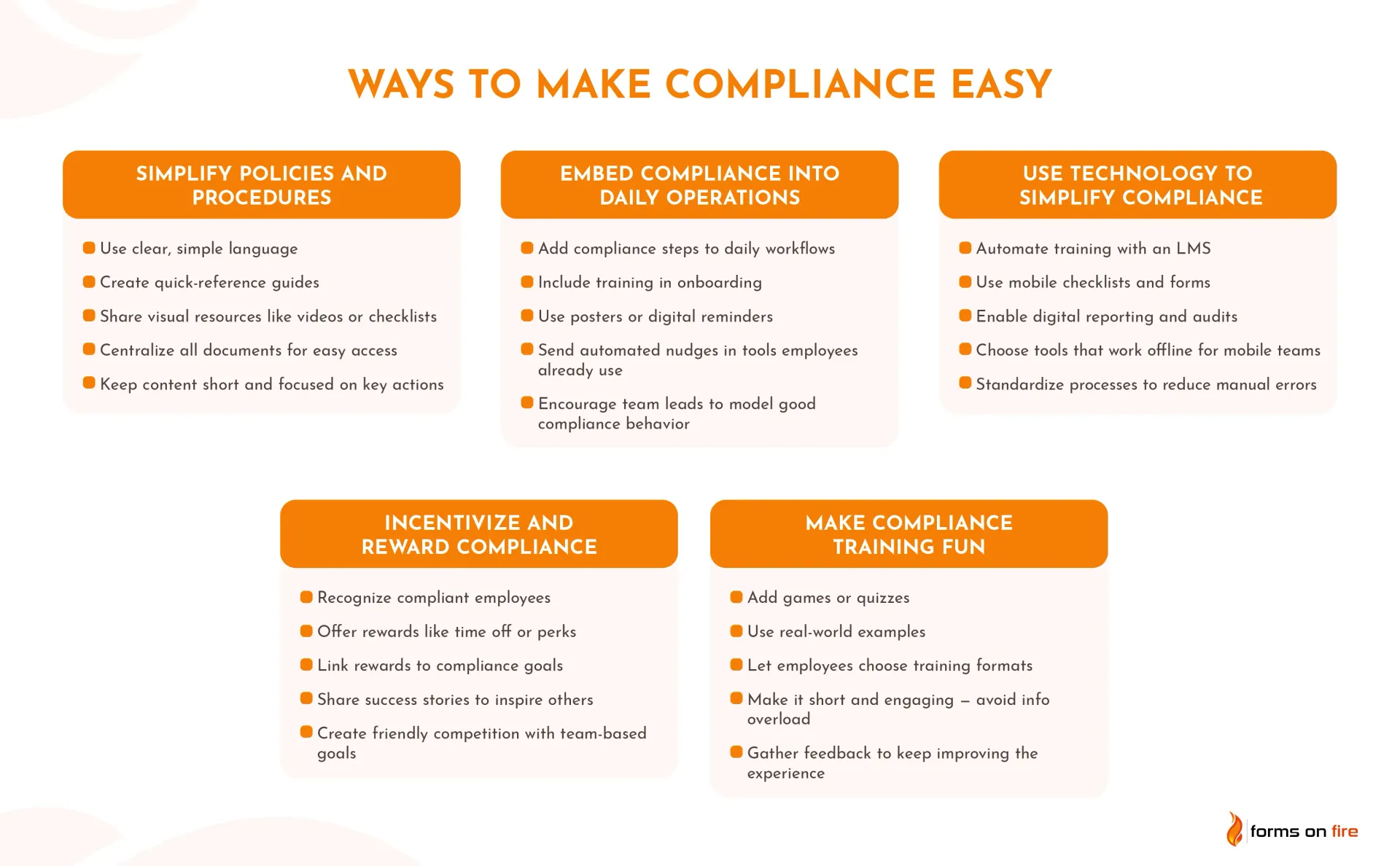
1) Simplify policies and procedures
If your compliance procedures are confusing or filled with complicated legal terms, employees won’t read them — let alone follow them. To keep compliance straightforward:
- Avoid overly complex legal jargon: Rewrite policies in clear, everyday language that's easy to understand. For example, instead of saying, “Employees must comply with applicable statutes regarding workplace ergonomics,” simply say, “Adjust your workspace so it's comfortable and safe to prevent injuries.”
- Provide quick-reference guides: Summarize key points into short, actionable documents or cheat sheets employees can quickly refer to.
- Offer easy-to-understand resources: Use instructional videos, visuals, flowcharts, or simplified checklists to communicate expectations.
- Make policies and procedures easily accessible: Store documents in a central location that is easily searchable (like an intranet, compliance portal, or mobile app) so employees can quickly find and pull them up.
Clear guidelines remove ambiguity and make it easier for everyone to do the right thing.
2) Embed compliance into daily operations
Compliance should feel like a natural part of your team's workflow — not an interruption. For better or worse, it can take a while before specific actions become second nature.
Until that happens, consider integrating compliance reminders into everyday workflows. You can add compliance-related steps to existing checklists and SOPs or send automated reminders within tools employees already use, such as CRM systems, project management software, or custom-built mobile apps.
Furthermore, you should make compliance training part of the onboarding process. Introduce compliance expectations and procedures to new hires early — it is a great way to establish compliance as a foundational element of company culture from day one.
If necessary, you can even use visual reminders around the workplace. Display posters or digital signage highlighting key compliance points, guidelines, or reminders in common work areas (i.e. "Safety glasses/gear required beyond this point.").
3) Use technology to simplify compliance
Certain tools and technology can drastically reduce the complexity and manual effort of managing compliance. Here’s how:
- Automate parts of compliance training: A learning management system (LMS) helps you schedule, track, and manage compliance training, as well as automate reminders and follow-ups so you don’t have to chase people down.
- Standardize processes with digital checklists and forms: Digital tools speed up inspections, audits, and assessments by providing easy-to-follow steps that employees can complete directly from their mobile devices — and collect the required data along the way.
- Utilize digital reporting and auditing tools: Technology simplifies incident reporting, recordkeeping, and compliance audits. This helps you catch issues quickly and easily document — and report on — various compliance activities.
If all of your team is in an office, there are a whole bunch of simple tools you can use. However, if you manage a mobile workforce, you will want to use an offline capable tool like Forms On Fire. This way, frontline employees will always have access to required digital forms — whether they need to brush up on a specific safety procedure or perform an inspection and collect data.
4) Incentivize and reward compliance
Workplace compliance shouldn’t just be enforced — it should be actively encouraged. To motivate others, reward employees who follow guidelines.
Here’s what you can do:
- Recognize employees who uphold compliance standards: Publicly celebrate employees who demonstrate excellent compliance behaviors in team meetings, newsletters, or company communications.
- Offer meaningful rewards: To reinforce positive compliance behaviors, provide incentives such as extra vacation time, gift cards, team lunches, or even professional development opportunities.
- Tie incentives directly to compliance goals: Connect compliance outcomes (such as audit results, training completion rates, or incident-free periods) to specific rewards to align incentives with organizational objectives.
It sounds like a cliché, but we are biological creatures that run on incentives. You just need to learn how to set them right.
5) Make compliance training fun
Compliance training has a reputation for being dull and repetitive, but it doesn't have to be that way. It can require some effort, but there are many interactive and engaging methods you can incorporate into your training approach.
This is crucial to making compliance easy, so let us explore these strategies in a separate section.
How to make compliance training fun and engaging
Compliance training shouldn’t put your team to sleep. If you want to see a positive change, it’s essential to get their attention. Why? Because there is a strong correlation between how engaging compliance training is and how much critical information employees will remember.
Here are some practical ideas to make compliance training more enjoyable — and more effective.
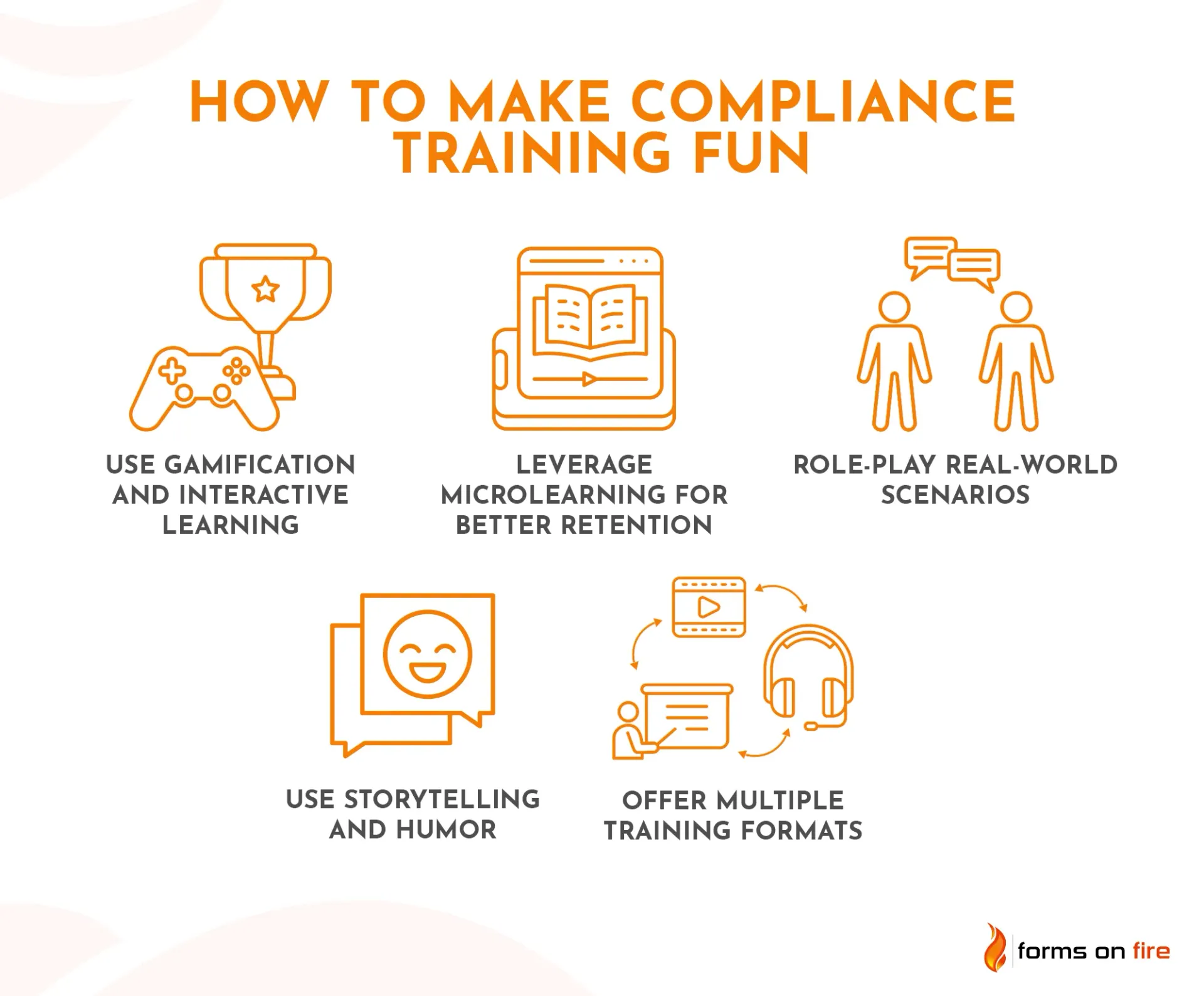
Use gamification and interactive learning
People naturally enjoy games and challenges, making gamification an excellent compliance training tool:
- Quizzes: Short, interactive quizzes keep employees actively involved in learning and help reinforce key points immediately. Immediate feedback on right or wrong answers also strengthens learning.
- Leaderboards: Quizzes can be paired with public leaderboards to encourage friendly competition, motivating people to engage more fully in compliance training.
- Scenario-based challenges: This type of training lets employees practice real-world decision-making in a risk-free environment. More on this in one of the following sections.
Employees who actively participate in gamified training can experience improved knowledge retention — studies show that interactive and engaging learning methods significantly boost long-term retention compared to passive learning.
Plus, gamification transforms compliance training from something employees "have to do" into something they genuinely want to do. We can’t promise everyone will love the idea, but it will fair better than a 57-slide long PowerPoint lecture.
Leverage microlearning for better retention
It is easier to do everything in one go and be done with it, but long, dense training sessions overwhelm employees and lead to poor retention. Microlearning is more effective. It breaks down training into short, focused lessons that are easier to absorb — and fit into a busy workday.
To implement this, you will want to create bite-sized lessons. By delivering content in small chunks, workers can focus on a single topic or concept at a time. To make such training scalable, you will have to go digital. Using engaging formats like explainer videos or interactive content we mentioned earlier, you can make learning more dynamic and memorable.
Here are some practical ideas:
- Just-in-time learning: Deliver short, targeted lessons at the moment they’re needed—for example, a 2-minute refresher on data handling right before an employee accesses a sensitive database.
- Refresher modules for recurring topics: Send out quarterly or monthly micro-modules on evergreen compliance topics like anti-harassment, phishing awareness, or workplace safety to reinforce key concepts over time.
- Policy change updates: When policies change, push out short explainer videos or infographics summarizing what’s new, why it matters, and how employees should respond.
- Mobile microlearning: Let employees complete short compliance lessons on their phones during breaks or commutes.
- Role-specific training snippets: Create quick, tailored content based on job function (e.g., finance teams get mini-lessons on anti-money laundering, while sales teams get quick hits on marketing compliance).
- Interactive FAQs: Convert frequently asked compliance questions into micro-units with interactive formats, such as click-to-reveal answers or brief explainer animations.
As an added bonus, microlearning allows employees to complete training in short bursts at their own pace, making it easier to stay engaged and finish the material.
Role-play real-world scenarios
By presenting realistic situations employees might encounter, you help them internalize compliance concepts and build practical problem-solving skills. You can use all kinds of props and even bring in outside help.
You can take two different approaches. First, you can present case studies or real-life compliance failures. We recommend using actual (or anonymized) examples of past compliance breakdowns — either from your company or your industry. Discuss what went wrong, what should’ve happened, and what could’ve prevented it.
The second approach is to simulate everyday workplace situations. Create short, interactive simulations where employees must choose how to respond to common compliance dilemmas. These could range from identifying a phishing email to navigating a potential conflict of interest to how to dispose of a hazardous substance.
Example: In a data privacy training, employees are shown a scenario where a coworker asks for access to a customer database they’re not authorized to view. The simulation walks the employee through possible responses, highlighting the correct action and explaining why it's the right move.
Use storytelling and humor
Where appropriate, storytelling and humor can breathe life into otherwise dull topics. To pull this off, you will need a good presenter or a compelling story — ideally both.
You can share real or fictional stories to show what good (or bad) compliance behavior looks like in practice. Stories make abstract rules feel personal and relatable. A little humor goes a long way. Funny illustrations, failure videos, memes, or anecdotes can make even the driest topics, like data privacy or anti-bribery, more approachable and engaging.
When people laugh, they listen — and they learn.
Offer multiple training formats
Not everyone learns the same way. Offering flexible training formats makes compliance training more accessible and effective:
- Self-paced e-learning: Great for independent learners who prefer to absorb information at their own speed, especially in remote or hybrid work settings.
- Live sessions (in-person or virtual): Ideal for open discussions, Q&As, and interactive group activities. They also give employees a chance to ask questions in real time.
- Podcasts and audio content: Perfect for busy employees who can listen during their commute or while doing other tasks.
- Infographics and visual summaries: Use videos or static visuals to distill complex compliance policies into quick, scannable formats — great for visual learners.
- Personalized learning paths: Certain learning management platforms help you tailor training content based on employee roles, departments, or risk levels. So they only get what's most relevant to their work.
That said, not every format fits every topic. For example, safety training often requires hands-on demonstrations or in-person sessions to be effective. Trying to teach proper equipment handling or emergency procedures through a podcast just won’t cut it.
Consider the nature of the content when choosing the right delivery method — some topics need more structure, context, or physical interaction to really land.
The foundations for building a culture of compliance
Do you know what makes compliance easy more than anything? A culture where everyone is trying to do the right thing.
Many different things go into creating a culture of compliance:
- Leadership: Leaders must lead by example. When executives and managers consistently demonstrate ethical behavior and follow policies, employees are far more likely to do the same.
- Accountability and incident reporting: Make it clear that everyone is responsible for compliance — not just the legal or HR team. Provide simple, safe ways for employees to report concerns without fear of retaliation.
- Open communication: Encourage questions and conversations about compliance. Openness helps catch problems early and builds trust across teams.
- Integrating compliance into company values: Compliance shouldn't feel separate from your core values. Show how policies support your mission, protect your people, and build a better workplace.
- Reinforcing compliance awareness: Keep compliance top of mind with regular reminders, updates, and refreshers — not just once-a-year training.
- Data-driven compliance monitoring: Use data to track compliance efforts, spot trends, and identify areas for improvement. Transparency and metrics help show progress and build accountability.
Building a culture of compliance is a long road, but it makes every subsequent journey that much easier.
Simplify workplace compliance with Forms On Fire
Managing compliance doesn’t have to mean drowning in paperwork or juggling spreadsheets. Forms On Fire is a powerful platform that helps organizations streamline compliance processes with customizable digital forms, automated workflows, and flexible reporting.
Here’s how it can make your life easier:
- Digitize your compliance checklists and audits: Replace paper forms with mobile-friendly digital versions that employees can complete on-site or remotely — no more lost paperwork or manual data entry.
- Automate workflows and reminders: Automatically route submitted forms to the right people, send out training reminders, and schedule recurring compliance tasks so nothing falls through the cracks.
- Track training and reporting in one place: Keep all your documentation, training records, and incident reports organized and easy to access —especially handy during audits or inspections.
- Build custom solutions without IT help:
Use drag-and-drop tools to create forms and workflows tailored to your organization’s specific needs, all without writing a single line of code.
Forms On Fire helps take the stress out of compliance management, giving you the tools to be more organized, reduce risk, and stay compliant.
We invite you to book a quick call and talk to our team. Tell us about your compliance issues, and we will show you how Forms On Fire can help.
Company
Contact
Platform
Resources
Use Cases
Industries

